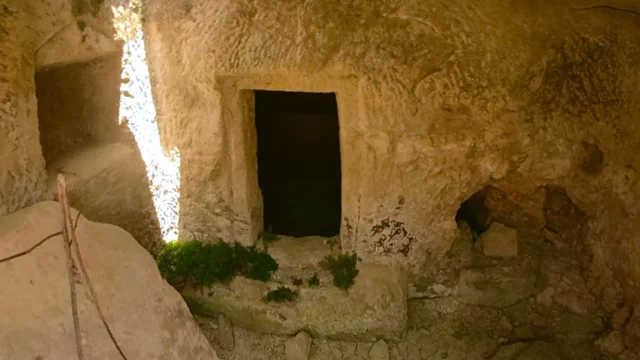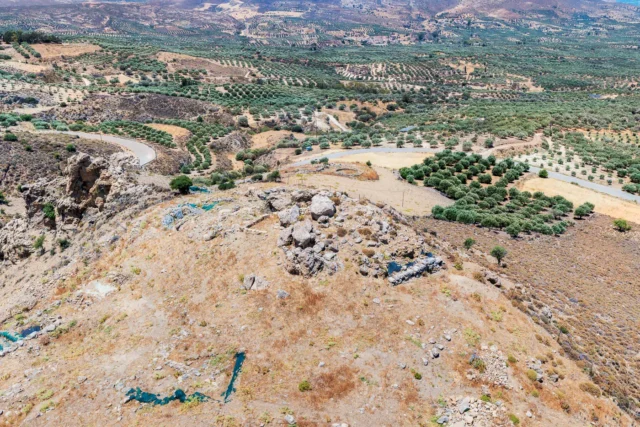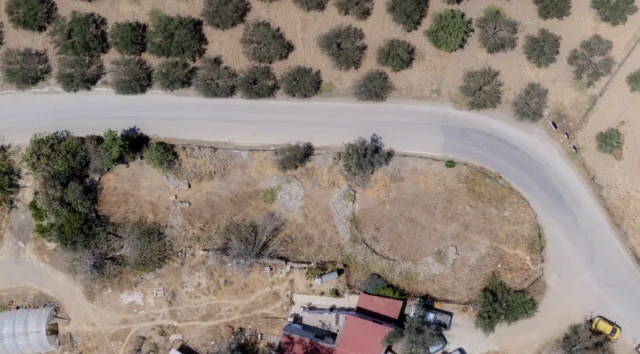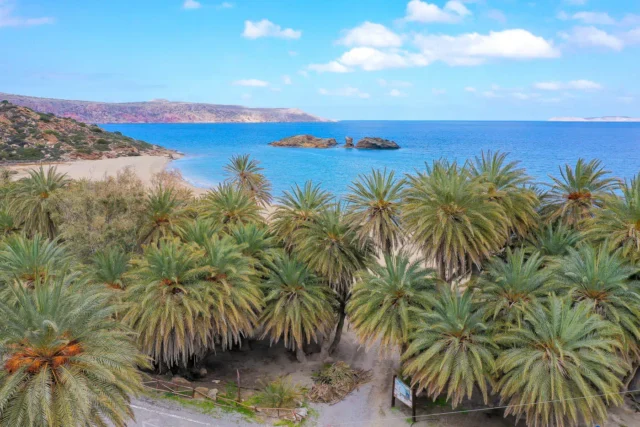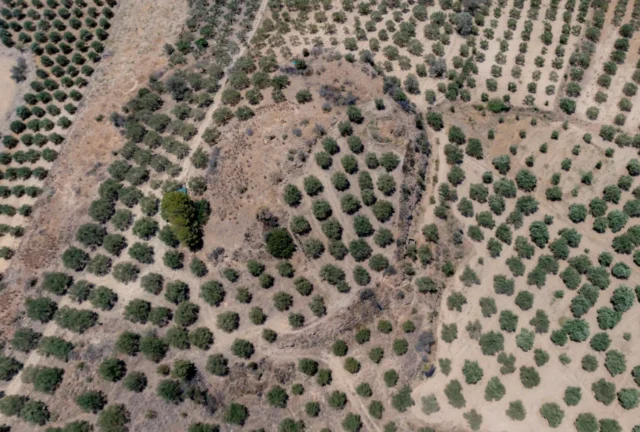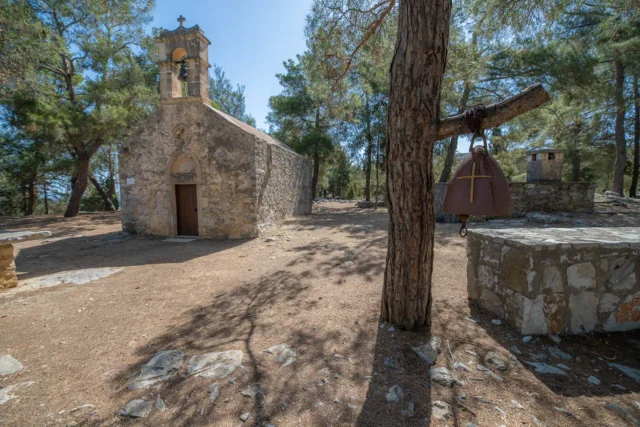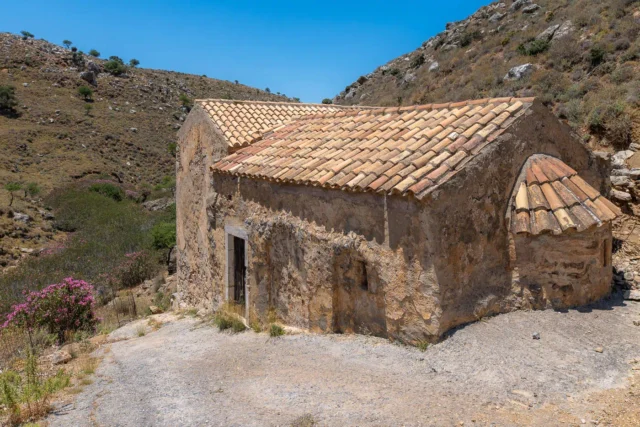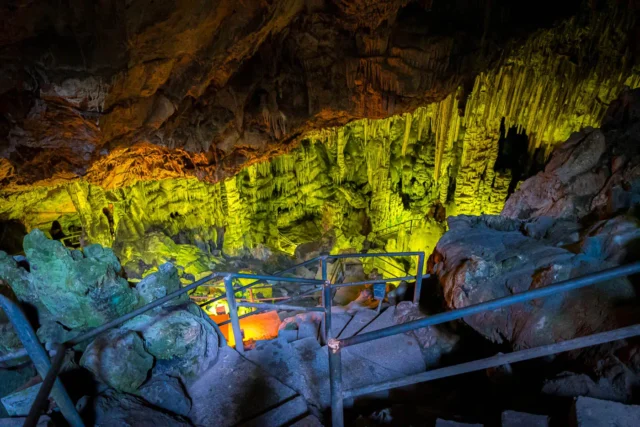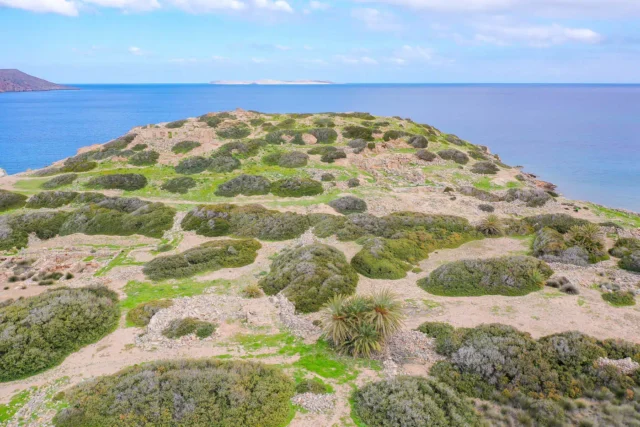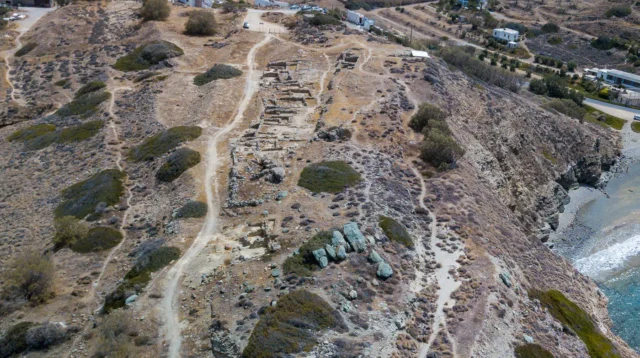748
listings found
Categories
Active filters:
Galatas Minoan Palace
Located on Galatas Kephala in central Crete's Pediada region, this significant Minoan urban site features a large palace complex. Occupied from Early Minoan I to Late Minoan III, the palace was built in Middle Minoan IIIA and rebuilt in MM IIIB, the settlement's peak. It functioned as an administrative, economic, and ideological center. Excavations revealed planned architecture with a four-wing palace, central court, ashlar masonry from Alagni, gypsum details, elite houses, and frescoes linked to Knossian styles. Finds include storage jars, evidence of feasting, a shrine model, and workshops for stone vessels and LM IB weaving. Strong ties to Knossos are clear. The town was abandoned in LM III after destruction events.
Hellenistic Town of Ampelos in Xerokampos
An ancient Hellenistic city (4th-1st centuries BC) on Crete's southeastern coast at Xerokampos. Its urban plan focused on maritime trade, unlike typical inland cities. Its most unique feature is its dual urban centers: Pharmakokephalo, a fortified coastal hub (approx. 12,000 sq meters) with walls and towers for trade, and Kastri, an inland acropolis 1km away for civic and administrative functions. These two centers were interconnected and complementary, reflecting a complex social and economic organization. The site offers insights into Hellenistic settlement patterns and interactions with other centers like Itanos and Hierapytna.
Kamilari Roman graveyard
The Roman Tombs of Kamilari, located in southern Crete, are an archaeological site that offers a glimpse into the island's history during the Roman period. Discovered in 2010, the tombs are situated at the foot of Evgora Hill, close to Metochi Kamiliariou. The area was known locally as "Xospilios," possibly derived from the Greek word for cave ("spilaio"). The tombs are estimated to have been constructed around 50 AD, based on discovered coins, and provide valuable insights into Roman burial practices. The site is under the supervision of the Archaeological Service.
Moni Asomaton monastery
Located in the Amari Valley, 35 km from Rethymno, this monastery is dedicated to the Synaxis of the Archangels. The katholikon (main church) represents a unique Franco-Byzantine style. Originally a 14th-century barrel-vaulted church built on 10th-century foundations destroyed in the 1303 earthquake, it was later transformed into a cross-in-square church. Historically, it was linked to the Varouchas family, served as the seat of the Bishop of Lampe, and became an agricultural school in 1927. After nearly a century, it officially reopened in May 2024.
The Minoan Settlement and Cemetery at Koumasa
Koumasa, an important Minoan archaeological site in southern Crete, is located about 15 km south of Gortyn. The site is significant for its Prepalatial cemetery and Minoan settlement, providing insights into the lives and customs of the Minoans during the Prepalatial period.
The Cemetery at Koumasa consists of three circular tholos tombs, a square tomb, and a circular ossuary. Excavations uncovered artifacts, including a clay figurine depicting a bull-leaping scene, Cycladic figurines, stone offering tables, and gold jewelry.
The Minoan settlement at Koumasa is located on a hill overlooking the cemetery. Excavations have revealed an extensive settlement with evidence of domestic and industrial activities. The presence of large walls suggests the existence of substantial buildings.
Platanos Minoan tholos tombs
The Minoan tholos tombs at Platanos, located in the Messara Plain of Crete, are significant archaeological remains from the Prepalatial period (c. 3200-2000 BC). Excavated in the early 20th century, the site features three tholos tombs (circular, beehive-shaped burial chambers) and a paved courtyard. The tombs, labeled A, B, and C, vary in size and preservation. Tomb A, the largest, has an internal diameter of 13 meters. The tombs contained many artifacts, including seals, figurines, pottery vessels, stone vessels, gold jewelry, and bronze tools. These findings provide valuable insights into Minoan funerary practices and material culture during the Prepalatial period. The presence of imported objects, such as an ancient Babylonian cylinder seal and Egyptian scarabs, also highlights the extensive trade networks that connected Crete with other civilizations in the Eastern Mediterranean.
Kaloi Limenes Minoan tholos tomb
This tomb, a circular burial structure characteristic of the Minoan civilization, offers valuable insights into the burial practices, social structures, and cultural beliefs of the Bronze Age inhabitants of this […]
Vai beach
A destination of exceptional natural beauty in the Sitia region, featuring pristine golden sands and crystal-clear turquoise waters. The beach is adjacent to a unique, protected palm forest, the largest of its kind in Europe, composed of thousands of Cretan date palms (Phoenix theophrasti). The surrounding area contains ancient ruins and traditional villages. Just south, a footpath leads to the secluded cove of Psili Ammos, a tranquil beach with fine sand popular with naturists.
Minoan Tholos Tomb at Porti
The Minoan Tholos Tomb at Porti, a significant archaeological site in Crete, offers a glimpse into Minoan burial practices and cultural traditions during the Bronze Age.
Agios Georgios in Toupaki Episkopi
Located on Toupaki hill near Episkopi, this single-nave, barrel-vaulted church dates to the early 15th century. It once served as the katholikon of a monastery linked to Agarathos Monastery. Notable architectural features include a Venetian doorway with a serrated lintel and a built-in Renaissance iconostasis. The interior is renowned for its exceptional 15th-century frescoes, stylistically linked to Manuel Fokas or his circle. The iconographic program includes a Christological cycle, the Last Judgment, and scenes from the life of Saint George, such as the dragon-slaying. It also uniquely depicts Zosimas giving communion to Saint Mary of Egypt. Latin inscriptions from past visitors are present on the walls.
Panagia Limniotissa in Episkopi
Located near Episkopi, Heraklion, this is an 11th-century, single-nave, cross-in-square Byzantine church. Its interior features three distinct layers of frescoes from the 11th, 13th, and 14th centuries, including the Virgin Mary Nikopoios. During the Venetian period, it was a women's monastery, receiving bequests from figures like Niphon Notaras. By the 17th century, historical documents confirm it became a metochi, or dependency, of the nearby Agarathos Monastery.
Moni Kallergi
Moni Kallergi, dedicated to Saint John the Baptist, is a historical monastery southeast of Smari, Crete, near Kastelli. Built during the Venetian era, it rests on Minoan-era ruins, evidenced by tombs and artifacts. Records link it to the Kallergis family. Though damaged during Ottoman rule and a 1931 fire, it was restored in the 20th and 21st centuries. Now an active monastery under the Metropolis of Arkalochori, it includes a restored central building, a two-aisled church dedicated to Saint George and Saint Spyridon, and a chapel for the New Martyrs of Crete. The site showcases a blend of Minoan and Venetian history, with ongoing services and visitor access.
Dikteon Antron cave
Dikteon Antron, also known as Psychro Cave, is a site of significant mythological and archaeological importance located on Mount Dikti in Crete.
The cave's history spans from the Neolithic to the Roman period, primarily as a religious site. In Greek mythology, it is renowned as the birthplace of Zeus.
The cave's interior features a wealth of stalactites and stalagmites, as well as a lake. Archaeological excavations have uncovered artifacts from various periods, attesting to its continuous use by humans. Open to the public, visitors can explore the cave's chambers and witness its geological formations.
Ancient Itanos
Ancient Itanos, a prominent harbor city on Crete's northeastern coast, thrived on trade and cultural exchange. Its strategic location in the eastern Mediterranean facilitated its growth and influence over eastern Crete. The city, built across two adjacent hills, likely housed important sanctuaries. The city center, located between these acropoleis, contains partially excavated building remains. Two additional hills mark the northern and southern boundaries of the city, with the northern hill housing the necropolis and the southern hill featuring defensive walls and towers.
Itanos held a unique position among Cretan cities due to its outward-looking nature and focus on trade. The city prospered well into the Roman period, even minting its own coins. The Northern Necropolis served as the main burial ground, with excavations revealing its use from the late Geometric to the late Hellenistic period. Notable artifacts recovered from Itanos include a marble funerary stele depicting a warrior, now housed in the Agios Nikolaos Museum, and an Ionic capital made of ironstone, suggesting the presence of monumental structures.
Chamezi archaeological site
An archaeological site near Sitia in eastern Crete, known for its unique elliptical house from the Middle Minoan IA period. Discovered in 1903 by Stephanos Xanthoudides and later studied by Costis Davaras, the structure was initially thought to be a peak sanctuary but is now considered a domestic dwelling. The site also contains earlier rural farmhouses from the Early Minoan period. Key features include a central courtyard, a possible domestic shrine where figurines were found, and numerous bronze artifacts.
Trypitos Hellenistic settlement
Located on a promontory 1.5km east of modern Sitia, this site was a small, fortified town that flourished during the Hellenistic period (late 3rd to mid-2nd century BC). Possibly the ancient city of Setaia or Heteia, its strategic position offered natural defenses and access to two harbors. Excavations revealed a well-preserved naval shelter (neosoikos), indicating maritime trade. The discovery of coins marked "ΠΟ" suggests it might be Polichna, an autonomous city-state with its own mint. Its relationship with nearby sites like Petras is still researched. The city likely declined after the mid-2nd century BCE, though its later history is uncertain. It remains an active archaeological site under investigation.
Agia Fotia Minoan Tombs
Minoan Tombs at Agia Fotia, Crete Historical Significance Near the modern village of Agia Fotia, on the northeastern coast of Crete, lies an extensive Minoan cemetery dating to the Early […]












